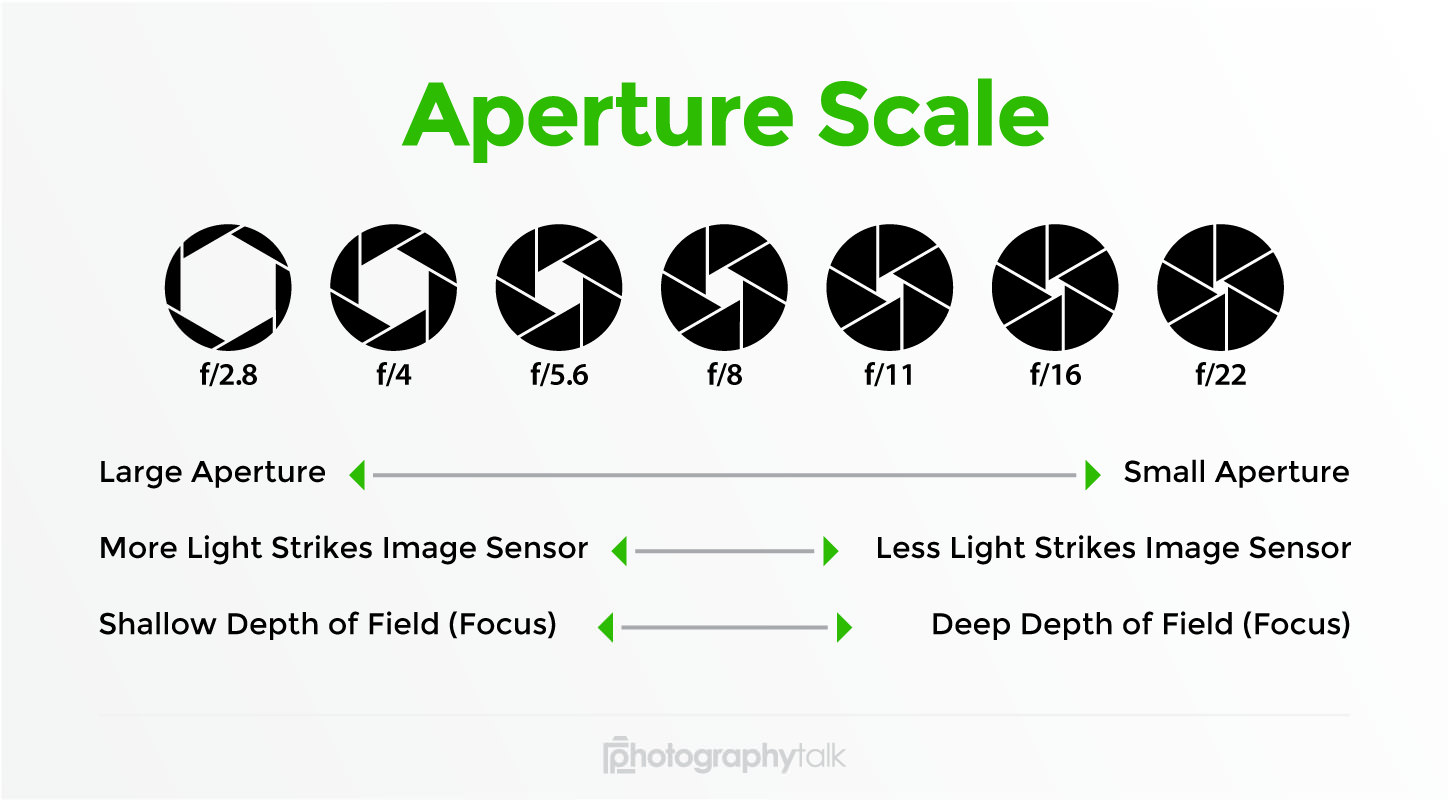

An Aperture is also called a F-stop and it's value is called F-stop value. Wider the aperture, more lights come into the censor and vice versa. Let’s say you are shooting video of a person 20-feet from the camera, and you’ve focused in on them.

The depth of field in a shot is the distance in Z-space (forward and back) that things will stay in focus. Sometime it's compared with the pupil in a human eye. Aperture, F-Stop, and Depth of Field Explained 1. When the shutter is opened to allow lights into the censor, light must pass through a window called an Aperture.
#Depth of field and f stop iso
I already discussed about ISO and shutter speed in my previous blogs and today I am going to explain about an Aperture and how it affects our photographs. An f-stop of f/2.8 used on a close-up of a bumble bee may leave. Keep the ISO as low as possible to avoid noise, unless you have a reason to raise it. Macro photographers often use very narrow apertures because they are so close to the subject. This can help you separate your subject from the background. Use a large aperture value, like f/2.8 or f/4 to get a shallow depth-of-field.
#Depth of field and f stop manual
And if you are using Manual mode, you can set the shutter speed and an aperture value independently. The f-stops work as inverse values, such that a small f/number (say f/2.8) corresponds to a larger or wider aperture size, which results in a shallow depth of. Key Points To Remember About Exposure, Aperture, ISO & Shutter Speed. If you are using an Aperture priority mode, you change an aperture value and the camera adjusts the shutter speed automatically to balance the exposure. To set an aperture value, your camera should be either in Aperture Priority mode (A) or in Manual Mode (M). Now, lets discuss about an Aperture, one of the three pillars in photography along with the shutter speed and an ISO, and it's relation with the shutter speed in exposure setting. The following graphic illustrates how changing these factors: aperture, focal length and the distance from the subject affect the depth of field.In my previous blog post, we discussed about the shutter speed and it's effect on the exposure. Subject distance The further the subject the more DOF 4. f/ - Higher aperture numbers (smaller opening) more DOF 3. f/ - Lower aperture number (larger opening) less DOF 2. Focal length of the lens shorter more DOF longer less DOF 1. Inversely, the farther away the subject is from the camera, the wider the depth of field will be. This span of acceptable sharpness is what we term depth-of-field (DOF). The closer the camera is to the subject it is focusing on, the narrower the depth of field will be. Distance to Subjectĭistance to subject refers to the length between the camera and the focus of the image. This allows you to capture a wider depth of field. The longer or more zoomed in the camera lens, the less depth of field you capture. Objects beyond the depth of field will appear blurred or out of focus. The wider the lens, the shorter the focal length. Depth of field is the distance between two planes, a closer one and a farther one, in which we can position objects to have an 'acceptably sharp' image formed in a camera. The focal length of the lens determines the image magnification. The smaller the aperture, the deeper the depth of field. The wider the aperture, the less depth of field you capture.

This opening controls the amount of light coming through the lens. The aperture is the opening created by a set of overlapping metal blades, known as the diaphragm, inside a photographic lens. You can affect the depth of field by changing the following factors: aperture, the focal length and the distance from the subject. Diagram explaining depth of field and aperture sizes. Remember that wide apertures have small numbers. In general, the wider the aperture, the shallower the depth of field, and vice versa. Shallow DoF is good to use when you want to isolate your subject from their surroundings, such as in a portrait or when elements in the background or foreground may be distracting. Changing your aperture ( f-stop) is one of the major ways of changing depth of field. A shallow DoF means more narrow range will be acceptably sharp in the image. Use a deep DoF in group photos, landscape shots and when elements in the background or foreground add to the message the photo is attempting to communicate. A deep DoF means all or most of your photo will be in focus, including the foreground, subject and background.
#Depth of field and f stop how to
Learn how to adjust your camera settings to utilize this important technique.ĭepth of field (DoF) is the area between the nearest and farthest points from the camera that are acceptably sharp in an image. Depth of field refers the range of distance that appears acceptably sharp.


 0 kommentar(er)
0 kommentar(er)
